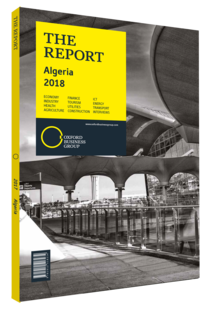Hocine Necib, Minister of Water Resources : Interview

Interview : Hocine Necib
What major hydraulic projects have been completed in recent years, and what investments are planned?
HOCINE NECIB: Over the past two decades the state has invested more than $55bn in infrastructure to mobilise, distribute and diversify its water resources, including dams, transfers, desalination plants, purified waste-water treatment plants (WWTPs), rehabilitated supply networks, irrigation perimeters and sanitation networks. The situation has improved considerably both in quantity and quality since water resources became a national priority in the early 2000s. We also have a large, ongoing short- and medium-term programme that includes the construction of five dams with a total capacity of 373m cu metres; 55 WWTPs with a shared estimated capacity of 4.6m population equivalent (PE); 29 other WWTPs scheduled to be launched in the coming weeks, with a total capacity of 3.9m PE; and 11 large perimeter irrigation projects.
What strategy has been implemented to diversify the mix of water resources at a national level?
NECIB: Algeria’s water resources are limited, vulnerable and unequally distributed. Declining rainfall, recurring drought cycles and climate change are now constants of the national water policy. Prioritising water resources has created a complete infrastructure to mobilise, produce, supply, distribute and store water, ensuring a balanced network able to mitigate regional imbalances.
Within this perspective, the sector has developed an essential tool for effective and rational management and exploitation, namely the National Water Plan, which defines all the actions and structural programmes that will be implemented by 2035. The strategy for increasing water resource mobilisation, in all its conventional and unconventional forms, is divided into several axes: the completion of several large dams, major transfers and conveyances; the desalination of seawater; sewage treatment and reuse for agricultural purposes; and the preservation of water against waste and pollution.
How is the management of water distribution and sanitation services delegated under the law?
NECIB: The 2005 Water Law states that the supply of drinking water and industrial sanitation are public services under the jurisdiction of the state and municipalities. The law also provides a framework for conceding these services to public entities and delegating their management to public or private entities, which come in three forms. In the first, Algerian Water (Algérienne des Eaux, ADE) is responsible for delegated management through 44 wilayas (provinces) while the National Office of Sanitation (Office National de l’Assainissement, ONA) is responsible for sanitation networks and treatment plants. The second form comes from ADE and ONA subsidiaries in Algiers, Tipasa, Oran and Constantine, which have entrusted management to foreign companies via management contracts. The last form is governed by communal boards that receive assistance from the ADE or the ONA as needed.
In addition, we are prioritising the consolidation of the ADE and the ONA to modernise and standardise management mechanisms throughout the country, while a three-year plan has been initiated to integrate the municipal boards into the ADE and the ONA by 2020.
How have law and policies been adapted to address the challenges of nationwide water treatment?
NECIB: In the last two decades the development of the sanitation sector increased the total national treatment capacity from 1.3m PE in 2000 to 16m PE in 2018. In addition, steps have been taken to improve governance and build a legal framework. The state also outlined the multi-year National Development Plan for Sanitation to better organise its future actions and provide a tool for formalising a national strategy on water sanitation intervention. Its implementation will lead to the protection of water resources, the reduction of waterborne diseases, the decontamination of the coastline and the fight against negative health impacts through 2030.
You have reached the limit of premium articles you can view for free.
Choose from the options below to purchase print or digital editions of our Reports. You can also purchase a website subscription giving you unlimited access to all of our Reports online for 12 months.
If you have already purchased this Report or have a website subscription, please login to continue.

